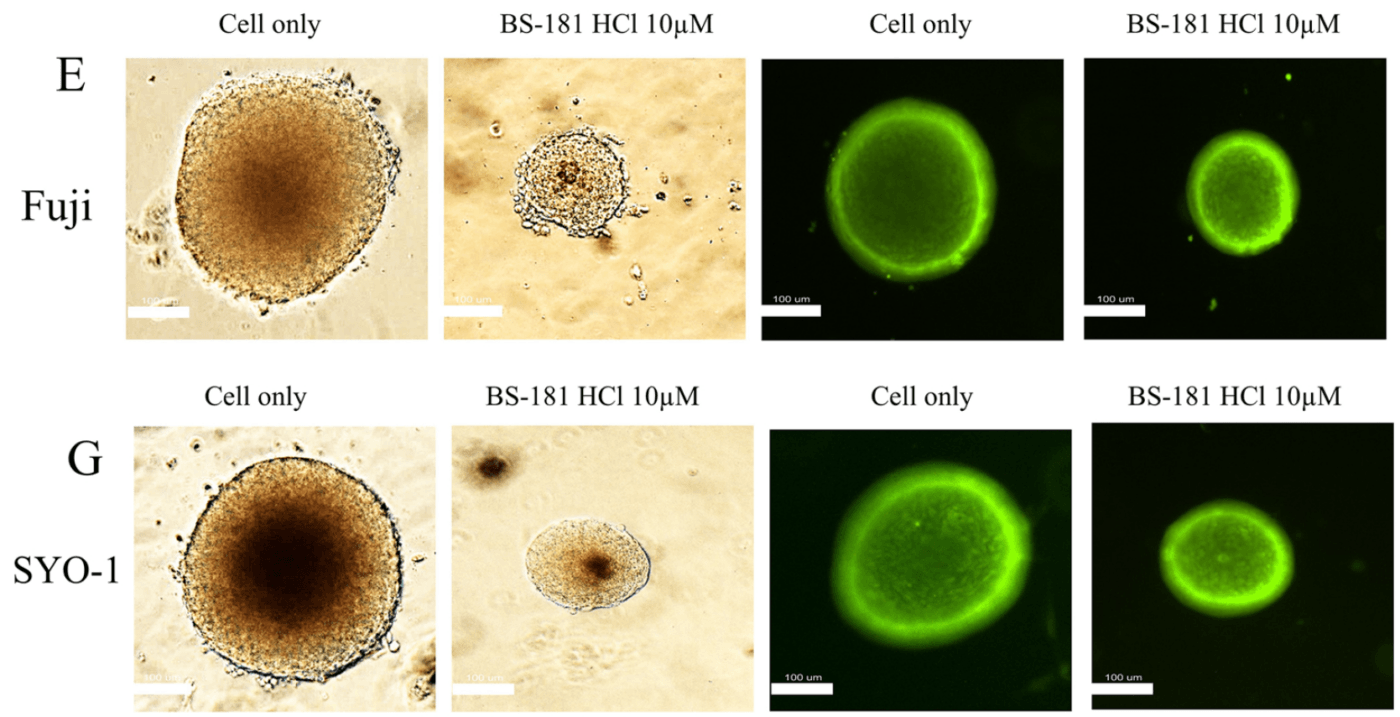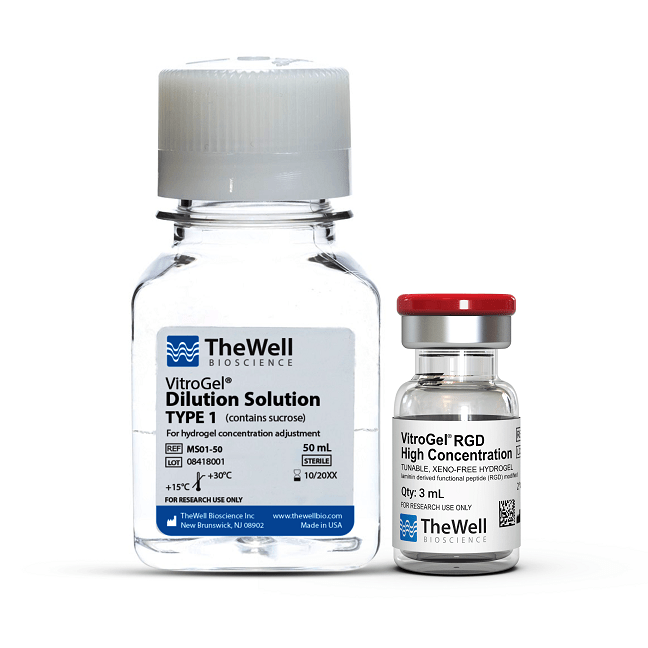Research Highlights
Inhibition of CDK7-dependent Transcriptional Addiction is a Potential Therapeutic Target in Synovial Sarcoma

Institutions:
University of Miami, UCLA, USC, and the Chinese Academy of Medical Sciences and Peking Union Medical College, Beijing, China
Team:
Li X., Dean D.C., Yuan J., Temple T.H., Trent J.C., Rosenberg A.E., Yu, S., Hornicek F.J., and Duan, Z.
Application:
Mimicking the 3D tumor cell environment for cancer cell proliferation assays and therapeutic strategies
Disease Model:
Synovial sarcoma
Hydrogel:
VitroGel® RGD
Cyclin-dependent kinases, such as CDK7, are promising therapeutic targets for many cancers. In particular, there is interest in the role of CDK-regulated cellular events in synovial sarcoma, which is a rare, highly aggressive mesenchymal tumor that so far has proven intransigent to most therapies. This cancer, which displays metastasis in almost half of patients, is characterized by a genetic translocation between chromosomes X and 18. It is possible that modulation of transcription at the earliest level could have a multitude of downstream phenotypic effects. In this study, the authors sought to elucidate the role of CDK7 in the transcription cycle of RNA polymerase II and its subsequent effects on tumorigenesis and cell proliferation. A combination of in vivo, immunochemical, and in vitro assays was needed to implicate the role of CDK7 on RNA polymerase function. For cell proliferation assays, it was important to compare traditional cell culture methods with 3D cell cultures, which improve the mimicry of the assay conditions to those found in actual tumor growth. Data from this type of study could lead to a better understanding of the relationship between CDK7 and tumor aggressiveness, and lead to the design of a targeted therapeutic strategy.
A joint team of researchers from UCLA, the University of Southern California, the University of Miami, and a Chinese University medical hospital set out to determine the role of CDK7 in the regulatory pathways of cell growth that could lead to synovial sarcoma. First, they correlated the levels of CDK7 expression with both the clinicopathological features and the clinical prognosis in this cancer. There was an extremely strong relationship in both cases, with CDK7 expression, by immunostaining and Western blotting techniques, being detectable in 90% of a total of 50 tumor tissues from synovial sarcoma patients. As the protein appeared to be localized in the nucleus, further assays were performed that revealed that phosphorylated RNA polymerase II was also associated with the disease. Knockdown experiments on CDK7 by siRNA was shown to inhibit synovial sarcoma cell proliferation. Importantly, the authors used 3D cell spheroid formation to confirm these results in a cell-like environment. They used VitroGel 3D RGD to form their spheroids. A hydrogel solution of VitroGel RGD was diluted 1:3 with water, and the resulting solution was mixed with complete growth media including Fiji or SYO-1 cancer cell lines and treated (or not) with the selective CDK7 inhibitor, BS-181. After 14 days, the size spheroids were imaged by light and fluorescence microscopy. The inhibitor resulted in tumors that were about 50% smaller than the control, a statistically significant difference at the P < 0.01 level. The results of this study demonstrated that CDK7 upregulation was clearly associated with advanced stages of synovial sarcoma, and that its mode of action is through the phosphorylation of RNA polymerase II, which then overexpresses the oncogene responsible for cell proliferation. Therapy with CDK7 inhibitors such as BS-181 is now a promising option.
Read the publication:
Related Products:


